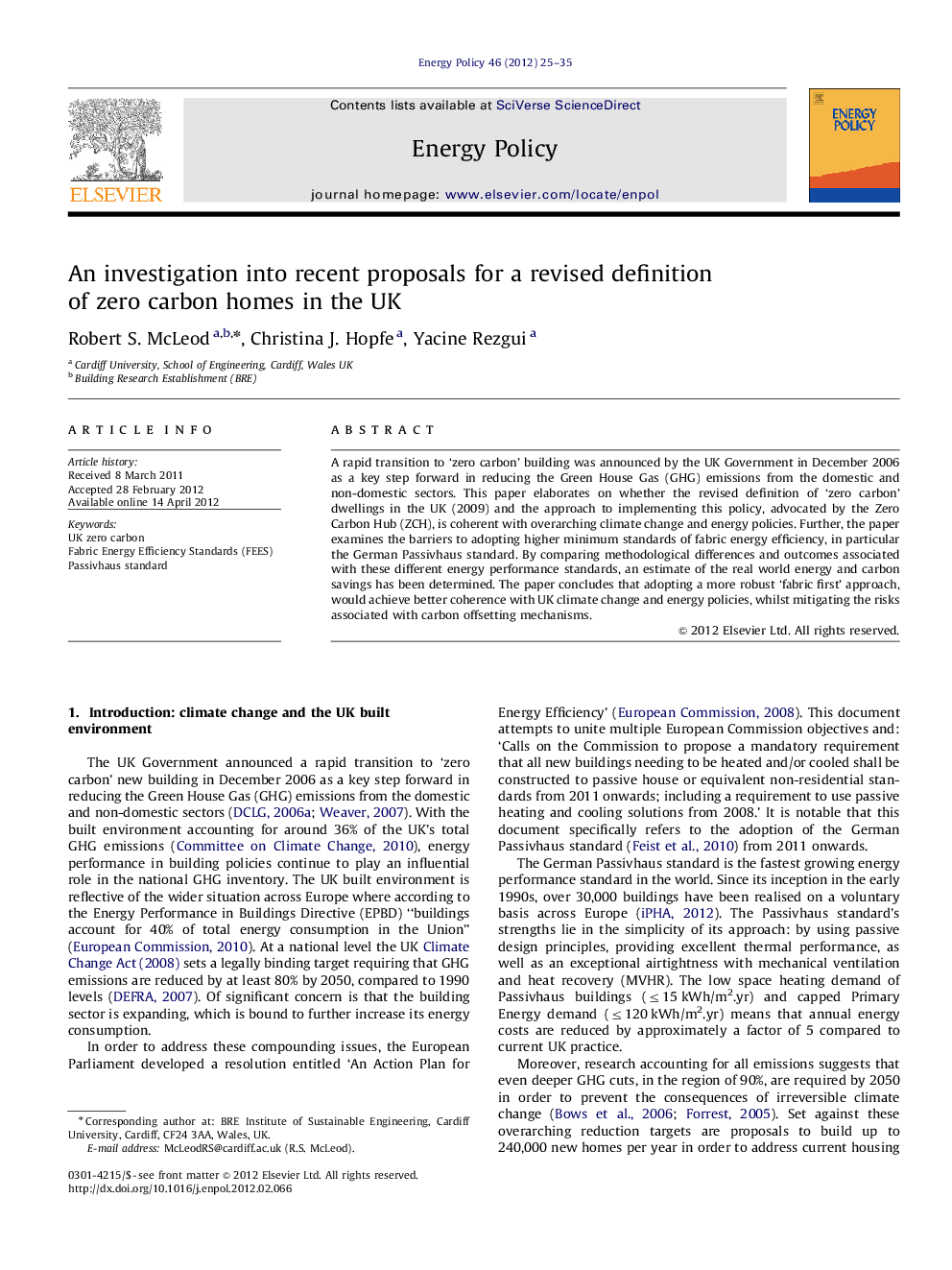| Article ID | Journal | Published Year | Pages | File Type |
|---|---|---|---|---|
| 7406365 | Energy Policy | 2012 | 11 Pages |
Abstract
⺠UK zero carbon building policy does not accord with the recent directives of the European Commission including recent revisions to the energy performance and building directive (EPBD). ⺠Fabric energy efficiency standards (FEES) proposed by ZCH and CLG are not in keeping with the recent scenario modelling by the department of energy and climate change (DECC) particular when the growth in domestic cooling demand is also considered. ⺠Existing SAP methodology (used to calculate emissions from UK dwellings) is masking significant carbon savings particularly in low and zero energy buildings which could be more accurately demonstrated using the Passivhaus planning package (PHPP). ⺠The 'allowable solutions' proposed by ZCH and CLG are effectively carbon offsetting measures which have been shown to be unreliable as a means of reducing green house gas emissions in other sectors. ⺠The new Zero Carbon policy effectively means that 50% of the NET carbon emissions can be offset elsewhere.
Related Topics
Physical Sciences and Engineering
Energy
Energy Engineering and Power Technology
Authors
Robert S. McLeod, Christina J. Hopfe, Yacine Rezgui,
